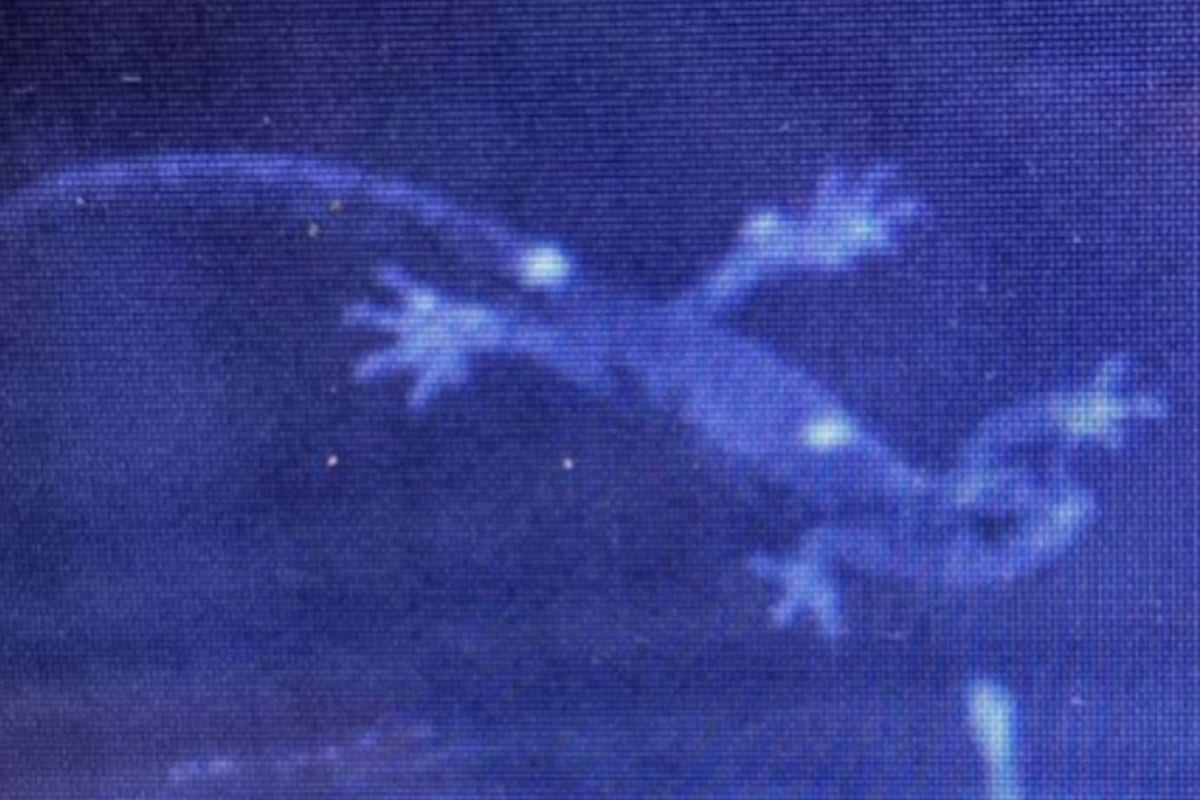

A species of salamander that lives in the canopy of tall trees makes clever use of glider and parachute techniques, according to wind tunnel research.
When you think of flying animals, you first think of birds, and secondarily perhaps bats. But there are also other animals that do not simply fall to pieces. Like salamanders of the species Aneides vagrans – ‘wandering salamanders’ – found in redwoods, which are among the tallest trees in the world. Although these amphibians, unlike flying squirrels, for example, do not have clearly visible body parts that make it easier to float, they still turn out to be very nice fliers.
Christian Brown, a biologist at the University of South Florida, and colleagues find this based on research in a purpose-built wind tunnel. There they dropped salamanders of four different species while filming them with high-speed cameras from three angles.
Big feet
The wandering salamanders, which live the most in tall trees of the four species, turned out to be the best skydivers of the bunch. By aligning their legs and tail, they were able to reduce their fall rate by 10 percent. In more than half of the cases they also made movements with their tails and torso that ensured that they could soar for a while.
The build of the salamanders may help them with their flying antics. “Compared to other climbing salamanders, Aneides vagrans a relatively flat body, long limbs and toes, and large feet,” the researchers write in the scientific journal Current Biology† With their large feet and long toes, they appear to form hollow surfaces in the air, making them fall more slowly. Their long legs may allow them to maneuver more easily.
More and more floats
“A hover-flying salamander that has no obvious adaptations for flight behavior is certainly an interesting discovery,” says biologist Gregory Byrnes (Siena College), not involved in the study. “Having said that, the find isn’t a total surprise either. Over the past few years, we’ve been finding more and more strange gliding species. It seems that many animals, both vertebrates and invertebrates, that live in trees can glide to some degree. And the more we explore these types of ecosystems, the more such species we find!”
What Byrnes particularly likes about Brown and colleagues’ study is that they compared multiple species. “They looked at the behavioral differences between a whole spectrum of species, some of which live mainly in trees and others on the ground. I hope that in follow-up research the researchers will be able to clarify what causes the differences in behaviour.”
Delicate ecosystem
“Scientists are still barely understanding the ecosystem in the redwood canopy, and the unique animal species that evolved within it,” Brown said in a statement. press release† “With climate change at an unprecedented rate, it is critical to gather more data on animals like the wandering salamander to better understand and protect this delicate ecosystem.”
Source material:
†Gliding and parachuting by arboreal salamanders” – Current Biology
†These salamanders parachute and glide from the tallest trees– Cell Press (press release)
Gregory Byrnes (Siena College)
Image at the top of this article: Christian Brown